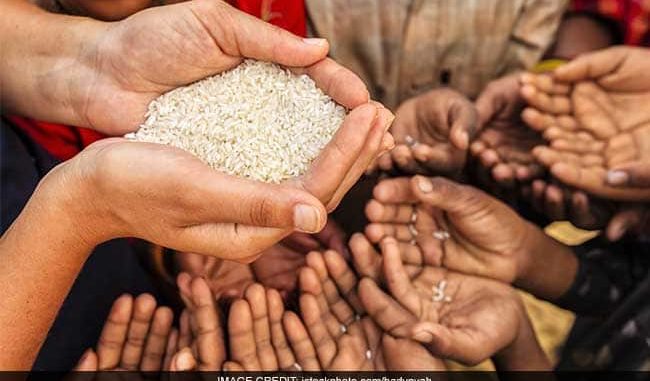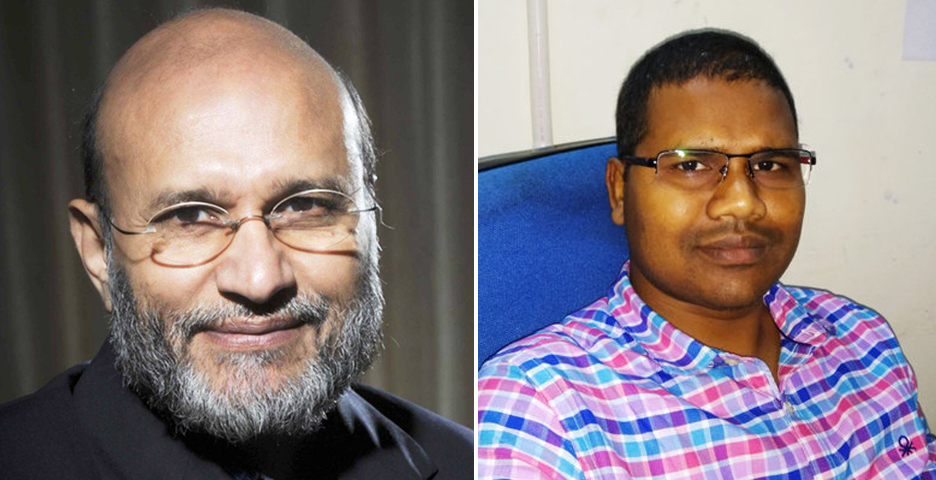

“While the economy maintained some growth momentum till 2015, the monumental blunder of demonetization followed by a poorly planned and hurriedly introduced Goods and Services Tax, both delivered body blows to the unorganized sector and Micro, Small and Medium Enterprises. The economic slowdown followed. None of the four engines of growth was firing after that. Private investment fell from 31% inherited by the new government, to 28% of GDP by 2019-20. Public expenditure was constrained by a silent fiscal crisis. Exports, which had never fallen in absolute dollar terms for a quarter century since 1991, actually fell below the 2013-14 level ($315 billion) for five years. Consumption stagnated and household savings rates fell. Joblessness increased to a 45-year high by 2017-18 (by the usual status), and youth (15-29 years of age) saw unemployment triple from 6% to 18% between 2012 and 2018. Real wages did not increase for casual or regular workers over the same period, hardly surprising when job seekers were increasing but jobs were not at anywhere close to that rate. Hence, consumer expenditure fell, and poverty increased.”
India has not released its Consumption Expenditure Survey (CES) data since 2011-12. Normally a CES is conducted by the National Sample Survey Office (NSO) every five years. But the CES of 2017-18 (already conducted a year late) was not made public by the Government of India. Now, we hear that a new CES is likely to be conducted in 2021-22, the data from which will probably not be available before end-2022.
Meanwhile, we know that the economy has been slowing for nine quarters prior to the outbreak of the novel coronavirus pandemic. Unemployment had reached a 45-year high in 2017-18, as revealed by NSO’s Periodic Labor Force Survey (PLFS).
Sufficient to estimate change
India’s labor force surveys, including the five-yearly Employment-Unemployment Rounds from 1973-4 to 2011-12, have also collected consumption expenditure of households. The PLFS has maintained that tradition. While the PLFS’s questions on consumption expenditure are not as detailed as those of the CES, they are sufficient for us to estimate changes in consumption on a consistent basis across time. It enables any careful researcher to estimate the incidence of poverty (i.e., the share in the total population of those below the poverty line), as well as the total number of persons below poverty. That is exactly what we do in the table.
There is a clear trajectory of the incidence of poverty falling from 1973 to 2012. In fact, since India began collecting data on poverty, the incidence of poverty has always fallen, consistently. It was 54.9% in 1973-4; 44.5% in 1983-84; 36% in 1993-94 and 27.5% in 2004-05. This was in accordance with the Lakdawala poverty line (which was lower than the Tendulkar poverty line), named after a distinguished economist, then a member of the Planning Commission.
Methodology
In 2011, it was decided in the Planning Commission, that the national poverty line will be raised in accordance with the recommendations of an expert group chaired by the late Suresh Tendulkar (then professor of Economics at the Delhi School of Economics). That is the poverty line we use in estimating poverty in the table. As it happens, this poverty line was comparable at the time to the international poverty line (estimated by the World Bank), of $1.09 (now raised to $1.90 to account for inflation) person per day.
Based on the Tendulkar poverty line, the poverty estimates for 2004-05 and 2011-12 are to be found in the Planning Commission’s own estimates using the CES of those years. Hence, we have extended the 2011-12 poverty line for each State and used the consumption expenditure reported by the PLFS to estimate a consistent poverty head count ratio (i.e., incidence of poverty in the population) as well as the absolute number of the poor. We feel confident about using the PLFS, because in the absence of CES data, the PLFS can be used to estimate the incidence of poverty. It also collects the household monthly per capita consumption expenditure data based on the Mixed Recall Period methodology. Similar to the CES, the PLFS (PLFS annual report, 2019-20, page 6) also asks the household questions about expenses on health, clothing and bedding, education, footwear and consumer durables for a 365 day recall period — prior to the day of the survey; but for non-durable consumption goods/services — including expenses on food, housing and conveyance, etc. — its question expects a recall period of 30 days prior to the day of survey. We naturally updated the Tendulkar poverty line, using the Consumer Price Index for each State to 2019-20, to arrive at the estimate for the last year before COVID-19.
An urban and rural rise
What is stunning is that for the first time in India’s history of estimating poverty, there is a rise in the incidence of poverty since 2011-12. The important point is that this is consistent with the NSO’s CES data for 2017-18 that was leaked data. The leaked data showed that rural consumption between 2012 and 2018 had fallen by 8%, while urban consumption had risen by barely 2%. Since the majority of India’s population (certainly over 65%) is rural, poverty in India is also predominantly rural. Remarkably, by 2019-20, poverty had increased significantly in both the rural and urban areas, but much more so in rural areas (from 25% to 30%).
It is also for the first time since the estimation of poverty began in India on a consistent basis, that the absolute number of poor has risen: from 217 million in 2012 to 270 million in 2019-20 in rural areas; and from 53 million to 71 million in the urban areas; or a total increase of the absolute poor of about 70 million.
It is important here to recall two facts: between 1973 and 1993, the absolute number of poor had remained constant (at about 320 million poor), despite a significant increase in India’s total population. Between 1993 and 2004, the absolute number of poor fell by a marginal number (18 million) from 320 million to 302 million, during a period when the GDP growth rate had picked up after the economic reforms.
It is for the first time in India’s history since the CES began that we have seen an increase in the absolute numbers of the poor, between 2012-13 and 2019-20.
The second fact is that for the first time ever, between 2004-05 and 2011-12, the number of the poor fell, and that too by a staggering 133 million, or by over 19 million per year. This was accounted for by what has come to be called India’s ‘dream run’ of growth: over 2004 and 2014, the GDP growth rate had averaged 8% per annum — a 10-year run that was not sustained thereafter. By contrast, not only has the incidence of poverty increased since then, but the absolute increase in poverty is totally unprecedented.
The contributory factors
The reasons for increased poverty since 2013 are not far to seek. While the economy maintained some growth momentum till 2015, the monumental blunder of demonetization followed by a poorly planned and hurriedly introduced Goods and Services Tax, both delivered body blows to the unorganized sector and Micro, Small and Medium Enterprises. The economic slowdown followed. None of the four engines of growth was firing after that. Private investment fell from 31% inherited by the new government, to 28% of GDP by 2019-20. Public expenditure was constrained by a silent fiscal crisis. Exports, which had never fallen in absolute dollar terms for a quarter century since 1991, actually fell below the 2013-14 level ($315 billion) for five years. Consumption stagnated and household savings rates fell. Joblessness increased to a 45-year high by 2017-18 (by the usual status), and youth (15-29 years of age) saw unemployment triple from 6% to 18% between 2012 and 2018. Real wages did not increase for casual or regular workers over the same period, hardly surprising when job seekers were increasing but jobs were not at anywhere close to that rate. Hence, consumer expenditure fell, and poverty increased.
Poverty is expected to rise further during the COVID-19 pandemic after the economy has contracted.
(Santosh Mehrotra is a professor of economics and Chairperson of the Centre for Labor, JNU. E-mail: santoshmeh@gmail.comSantosh Mehrotra has recently edited ‘Reviving Jobs: An Agenda for Growth, 2020’.
Jajati Keshari Parida is Assistant Professor of Economics at the Central University of Punjab, Bathinda)





Be the first to comment